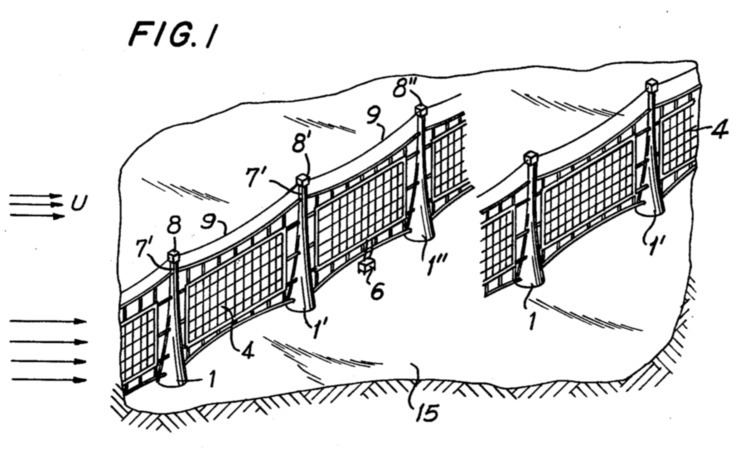 | ||
A vaneless ion wind generator or power fence is a proposed wind power device that produces electrical energy directly by using the wind to pump electric charge from one electrode to another, with no moving parts.
Wind energy is usually extracted to make electricity by means of a wind turbine. The bird deaths, vibrational noise, and moving shadows associated with wind turbines would not occur with ion based power generation.
One design uses water sprayed from a nozzle facing a toroidal charged electrode. This induces an opposite charge in the water, and when the water flows out of the nozzle, each drop carries a small amount of charge. These water droplets are then blown by the wind, going through the center of the charged toroid without touching it. The droplets then hit a fine mesh, adding to its charge.
The other alternative is to use the Earth as the second electrode. The main advantage of this system is that it has no moving parts except the water droplets. The disadvantages are that it needs a constant supply of water, its wind profile can't be reduced, it requires many small parts, and it has to be well-crafted to reduce corona discharge losses. The device would produce direct current, which would need to be inverted to apply to a standard AC power grid.
Lord Kelvin created a similar device that used the energy of falling water droplets to generate high voltage, sometimes called "Kelvin's Thunderstorm".
